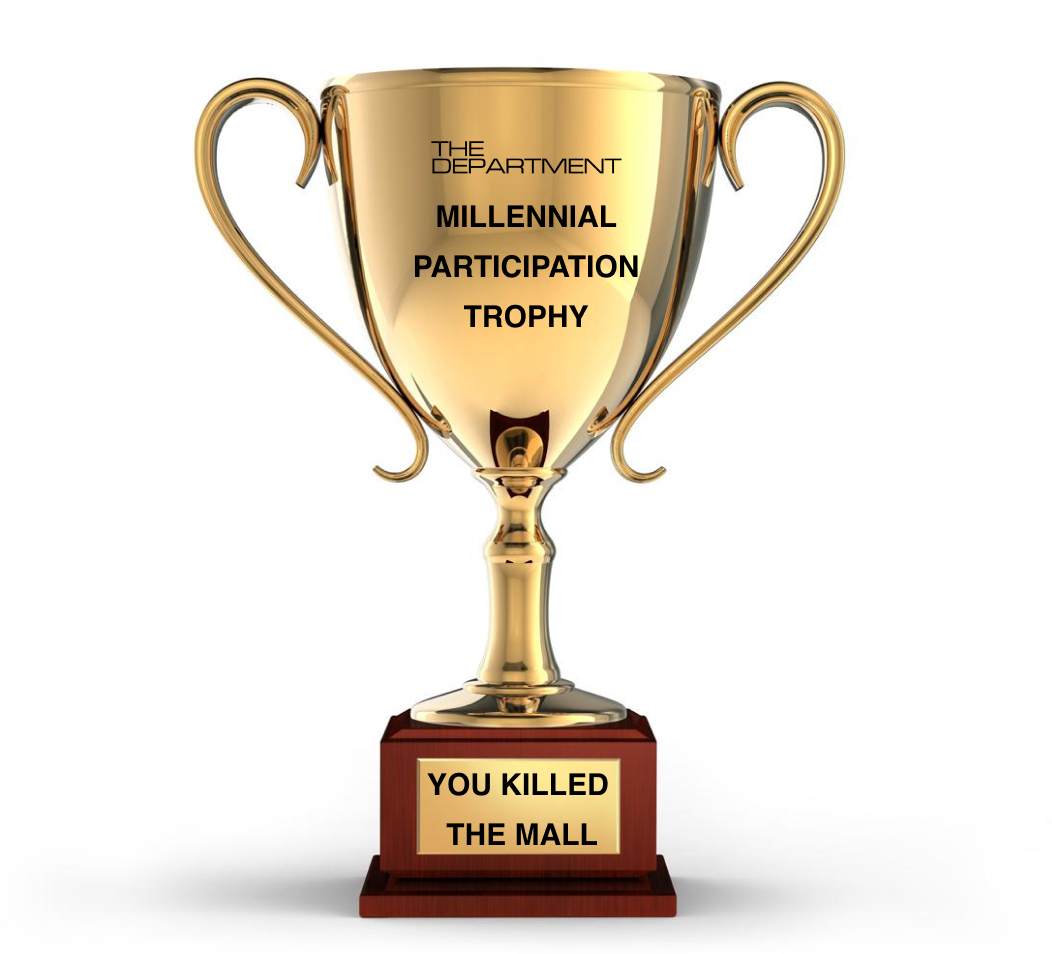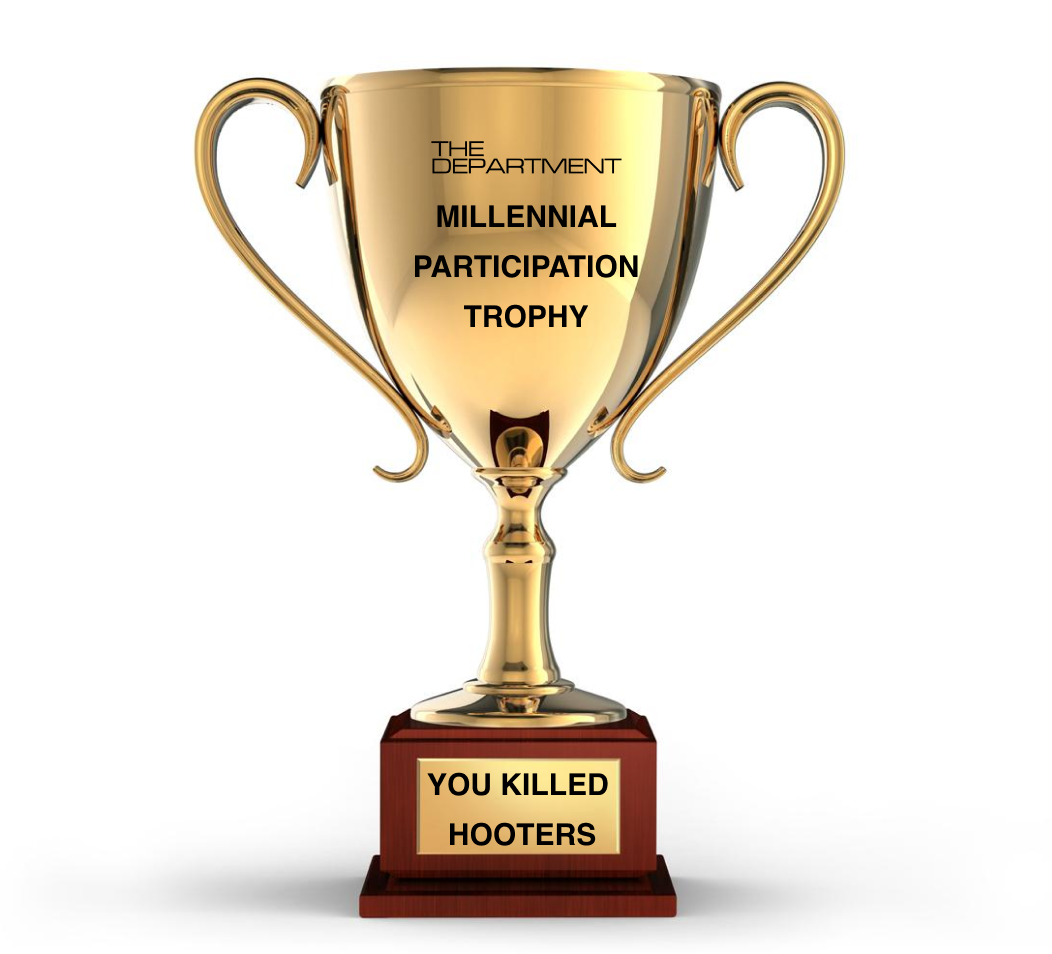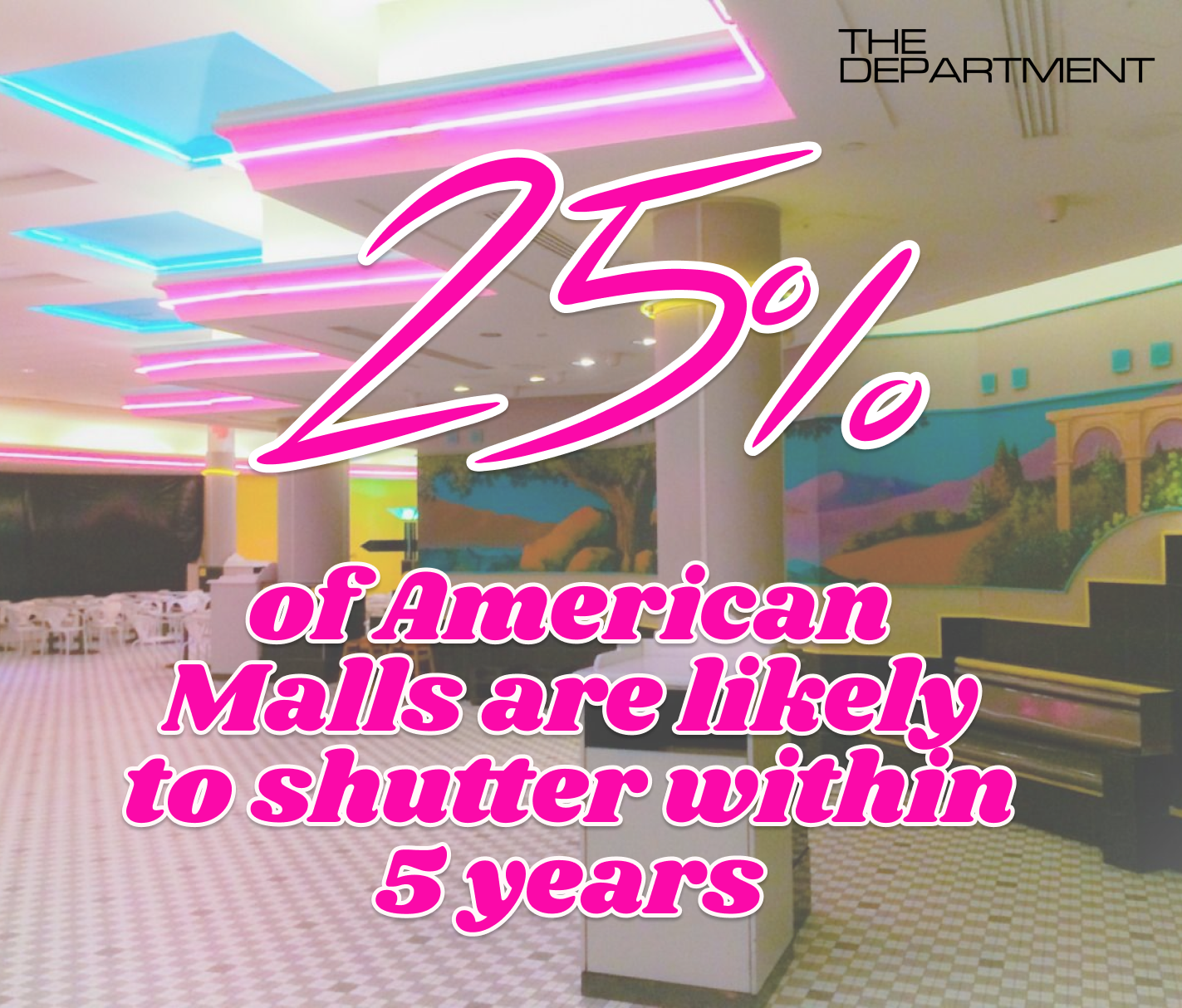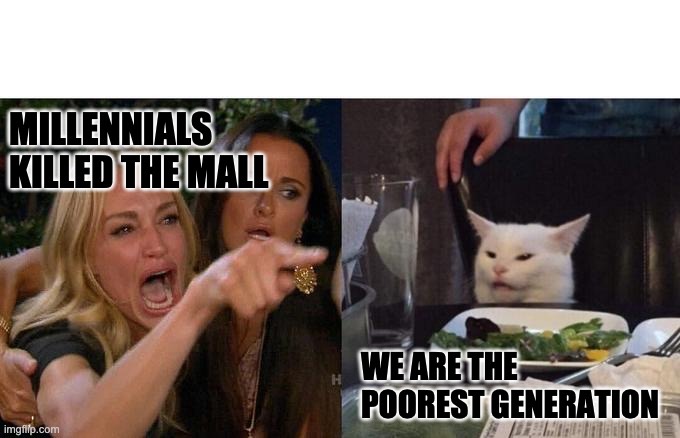︎︎︎episode 20
Murder, They Wrote: Millennials Kill Everything. The Mercy Killings of Applebee’s to the American Mall, Light Yogurt to Napkins and everything in between.
Dec 15th, 2020
︎︎︎︎ Listen on Apple
︎︎︎︎ Listen of Spotify
︎︎︎︎ Listen on Stitcher

From Murder to Mercy Killings
The trope of millennials “killing” things has been a nuisance since the early part of the aughties - emerging as a click bait headlines initially by Boomers recognizing industry declines with fingerpointing angled toward millennials who’s consumer tastes, income, and spending habits have varied so drastically than their predecessors. Millennials have been blamed for killing tons of passe things>> - from cars, to napkins to golf. Many we welcome with open arms that were based on outdated fads like Light Yogurt or a misguided attempt by corporations to lure in a “younger” mindset resistant as well as not financially secure enough to be able to support.

Around 2012/2013 bad press started coming out about Millennials - mostly written by Boomers - about the generations laziness and entitlement. Kate Dries reported for The New York Times in 2013, trend pieces portrayed millennials as materialistic but cheap. One of the most famous was a Time Magazine article titled “The me me me generation - Millennials are lazy, entitled narcissists who still live with their parents. Why they’ll save us all.” Yikes.
More sensationalized sentiments blossomed - particularly articles with Millenials Killing things in them. One headline in The Christian Science Monitor in 2012: "Millennial generation could kill the NFL." Forbes, the same year: "Is Gen Y's Live-At-Home Lifestyle Killing The Housing Market?" By 2014, things had really heated up, with "promiscuous" millennials killing McDonald's because they apparently lacked fast-food loyalty. By 2016 Millenials were getting fed up and were lashing back. The most famous was a tweet by The Economist asking why Millenials were not buying as many diamonds.
The reality of the matter is that the Millennial generation "are less well off than members of earlier generations when they were young, with lower earnings, fewer assets, and less wealth." which was reported in a statement by the Federal Reserve. They also said the discrepancy could be explained primarily by the fact that millennials came of age during the Great Recession, kneecapping their financial well-being in their early adulthood.
The Department Podcast
Millenial Participation Trophy Wall
Feel free to send and share with the honorable recipient:











I Don’t Want My Baby Back:

The Casual Decline of the Casual Corporate Chain
Heavy hitting restaurants in the 80’s and 90’s were often themed chain establishments with a taste for the fattier things in life. Well guess what. Millennials have Murdered them. Say goodbye to your favorites like Ruby Tuesday, Applebees, TGIFridays, Chili’s and Old Country Buffet. The slump of sales is attributed to Millennials not doing their bit and frequenting these Great American Pastimes.
Funny thing is that 40% of the American food budget is spent eating out - but looks like Millenials are going elsewhere….

We break it down:
- Authenticity
- Conscious Consumerism (eating local, farm to table, etc)
- More options and Indie restaurants.
- A move away from the mall
- Food quality and menu
- Budget
- Cooking at Home
- Yelp
- Fast Casual
- Delivery Apps
- Instagram and the rise of food picture culture
Make sure to check out the movie Waiting… if you haven’t done so already.

Breastaurants - not as bouncy as they used to be.
Hooters is showing cracks with 7% closure rate and counting - with the pandemic wiping out more locations. It mostly comes down to crappy food and out of date uniforms - cuz Twin Peaks down the street (Hooters for Foodies with a lumberjack theme) is doing better than fine.
Gen Z is gobbling up Fast Food Merch
There is a huge trend in Fast Food Chains - trending with the Gen Z kids - particularly with their merch. Lots of homebody and apparel stuff coming from McDonald’s, Dunkin Donuts, KFC and even Pizza Hut.
The Erasure of the Ethnic Aisle
The “ethnic aisle” is seeing a rehabilitation>> as the definition of “mainstream” American food gets rewritten.
Make sure to check out Omson>> - a fantastic starter meal kit company you don’t have to go to the grocery aisle to get!
The co-founder Vanessa Pham contends: "The grocery-store layout should be mapped to how the rest of the country looks. Noodles should be next to pasta. Asian condiments should be next to Western condiments,"
Millennials, Like, Murdered Malls

Well no - cultural and wealth distribution as well as technological advances killed the mall.
As of 2019, mall vacancies were at a seven-year high - with pre-pandemic reports claiming between 20% to 25% of malls will close by 2022. We can only imagine post pandemic these numbers will be worse.

With lack of sales “anchor” stores have quickly left underperforming malls - causing more casualties of other stores and soon barren wastelands.
Check out the beauty of these abandoned malls - We recommend checking out the work of Seph Lawless>>, a photographer who specializes in abandoned places.
So, like, what’s up?

- Rise of ecommerce, savvy shoppers & convenience culture
- Out of date
- Mass Market retailers also out of touch
- They were too late to have an online presence
- They were tone deaf about social justice movements like #metoo (Victoria’s Secret)
- They couldn’t adjust to the world of fast fashion
- They didn’t sign on to any social responsibility and sustainability
- They didn’t do a good job at social media
- The stores looked dated...they don’t look good on social media
- Their clothes just weren’t on trend, or the brand image didn’t really mean anything...just bad branding all around
- Demand for better
- Millenials are poor!
- They make up the largest share of the U.S. workforce, but control just 4.6 percent of the country's total wealth.
- The average Baby Boomer working in 1989 during their early 30s had 4X the wealth that today’s millennials have (when adjusted for inflation). They also had 26% of the wealth at that time, compared with the 4.6 percent that millennials have. So just a major shift in wealth for this generation.
- In total, Boomers have twice the wealth of Generation Xers (who aren’t doing that great either), and 10 times the wealth of millennials
- And then there is the debt! The average millennial has nearly $30,000 in personal debt, with about $19,000 of that being student loans.
- And because of all of this debt, and about a 20% decrease in average salary from the boomers, millennials have very little savings and they have an average net worth of less than $8000

The Experience Myth
So yes, millennials say they prioritize experiences: A survey from Eventbrite, a "marketplace for live event experiences," found that 78% of millennials respondents would rather spend money on an experience than a thing, and 77% said their best memories come from experiences,
But guess what, Boomers say they do the same thing at almost the same rate (74%)! And economists have said, yeah, millennials were spending less money on stuff when they were in their 20s, but when they hit their 30s, their spending on consumer goods increased to a pretty average level.
And millennials love to treat themselves: According to Fidelity Investments' 2018 Millennial Money Study - 86% said they treat themselves at least once a month, setting them back $110 a month on average.
What’s, like, Next?
Well - lots of innovation - taking that space and transforming it to align with the consumer trends and actual needs. There’s talk of Amazon showrooms,indoor villages of housing, gyms, medical clinics, charter schools, restaurants, theatres, grocery stores.
Old Economy Steve: The meme that launched 700 cathartic memes:

Once more with Feeling:

